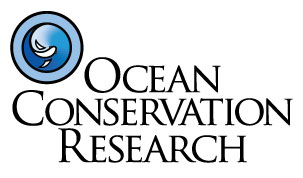Ocean Hero Richard Charter sent me a fabulous article today from the New York Times about the soundscapes of the spring sea below the arctic ice. Written by Kate Stafford of from University of Washington Applied Physics Lab, the article…
Category: Noise Pollution
New lab evidence substantiates noise impacts on invertebrates
Illuminating ocean noise article in Scientific American
On Friday Scientific American online published an article about ocean noise pollution research. The article covers the work of Chris Clark who has been doing some fabulous passive acoustic monitoring of Right whales in the Stellwagen Banks National Marine Sanctuary…
A ‘new’ source of data for sub-lethal noise impacts!
One of the more vexing challenges in understanding the effects of noise on marine animals has to do with assessing the “sub-lethal” impacts that compromise biological functions. These include the impacts from noises that mask or hide biologically significant signals,…
Is the ocean really getting louder?
OCR mathematician Tom Reuterdahl and I have just finished a modeling exercise aimed at determining how loud the ocean was prior to industrial whaling. The premise of the investigation is that while some 50,000 cargo ships are now plying the…
An unusual climate of cooperation
I find myself again in Washington DC, this time for a workshop on “Marine Mammals and Sound” sponsored by an interagency group which includes NOAA, the Minerals Management Service, and the Navy. (Interagency cooperation will be one of the hallmarks…
A little louder please, I can’t hear you.
Mark Spalding from The Ocean Foundation sent us an article in Science Daily this week which discusses the findings of Susan Parks and colleagues regarding how North American Right whales are increasing their vocalization levels to overcome the background noise…
Navy files for “Incidental Take Permit” in the Gulf of Alaska
A few weeks back we submitted comments on the US Navy’s Draft Environmental Impact Statement (DEIS) for the expansion of Anti-submarine Warfare exercises in the Gulf of Alaska (GOA). The DEIS, at some 950 pages was very wordy, though we…
Communication signals threaten marine habitat
Back in the mid 1970’s Physical Oceanographer Walter Munk was evaluating the acoustical transmission characteristics of the ocean “sound channel” – an isothermal layer in the deep ocean that baleen whales use for long distance communication. His visionary work in…
The Neutrino and the Whale
A nicely written article in the Dec. 3 2009 issue Nature reveals how a how a neutrino detection experiment conducted in the Mediterranean Sea by nuclear physicists actually uncovered an abundance of sperm whales. The experiment involved placing hydrophones down…

